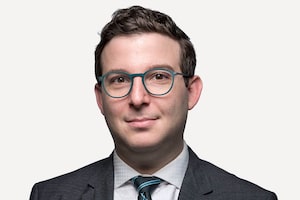
Recent analysis shows the pace of retirement among members of the baby boomer generation has been accelerating in recent years. That means advisors should expect the proportion of their clients in decumulation to rise steadily.Robert Daly/iStockPhoto / Getty Images
Sign up for the Globe Advisor weekly newsletter for professional financial advisors on our newsletter sign-up page. Get exclusive investment industry news and insights, the week’s top headlines, and what you and your clients need to know.
As long as investors are focused on accumulating more wealth, Moshe Milevsky says their incentives are “aligned perfectly” with their financial advisors.
“Clients want their accounts to grow and [advisors] want their accounts to grow,” says Mr. Milevsky, a finance professor at York University’s Schulich School of Business in Toronto. Where things start to “become very problematic,” he says, is when clients start drawing down on their investments in retirement – a process known as decumulation.
In an industry in which income is often tied directly to assets under management (AUM), Mr. Milevsky warns advisors face an increasing conflict of interest in how they’re compensated as more baby boomers enter retirement and begin decumulation. More than five million Canadians are going to turn 65 by the end of this decade, according to data from Sun Life Assurance Co. of Canada.
In the U.S., recent analysis from the Pew Research Center shows the pace of retirement among members of the baby boomer generation has been accelerating in recent years. That means advisors should expect the proportion of their clients in decumulation to rise steadily, which Mr. Milevsky says will only worsen a conflict that the industry claims doesn’t exist.
“The first thing you have to deal with when you have a conflict of interest situation is to recognize the problem – and I don’t think we have even reached that point yet,” he says.
Shaun Hauser, founder and president of Wellington-Altus Financial Inc. in Winnipeg, is among those who believe no such conflict exists.
“I understand the theory, but the implication is that compensation drives behaviour. It implies that people will not default to doing what’s right, that they will default to what is going to get them paid,” he says.
“I’m not suggesting that some people won’t let compensation drive their behaviour, but I think the reason why companies like ours have been so successful is because we have been very good at eliciting trust – not by selling stuff.”
An example of the conflict, Mr. Milevsky says, is over when an investor should start taking Canada Pension Plan (CPP) payments. Delaying until the age of 70 will mean much larger payouts, but he says advisors are incentivized to encourage clients to take CPP as early as possible in order to delay decumulating their investible assets for as long as possible.
“That’s how you can understand the misalignment of incentives,” Mr. Milevsky adds, noting the financial advice industry is unique among professional services in the way it charges consumers.
“My accountant, lawyer and chiropractor charge by the hour,” he says. “If I go and buy a fridge, do the people at the store say to me, ‘Every year, we’re going to value your fridge and charge you again and again and again?’ No, of course not.”
Fee-for-service versus AUM model
Mr. Hauser says regulators are trying to systematize how fees are delivered by advisors, but he worries that the fee-for-service model, in comparison to the legal and accounting vocations, is too “simplistic.”
Charging by the hour or flat fees for specific services, he says, fails to acknowledge “all the different duties that wealth advisors perform as it relates to their clients.”
Regardless of the many hats advisors have been required to wear as the industry has evolved, the amount of money they can make with AUM compensation “is really obscene,” says Mark Yamada, president of PÜR Investing Inc., a software development firm specializing in risk management and defined-contribution pension strategies.
Fees compound just as returns compound and the industry is well aware of this, he adds.
“Decumulation is a fairly short period of time, roughly 25 years or so,” he says. “But if you are paying 1.5 to 2.5 per cent in fees … over 25 years, then, depending on your rate of return that’s about 40 per cent of your money going to fees for the rest of your life.”
Mr. Hauser of Wellington-Altus says the question of what happens to advisor compensation once a large proportion of clients are in decumulation is a good one and he’s not sure he has a good answer.
“I completely understand that there’s margin compression all over the place, however, [it’s] especially in the manufacturing side of the business and perceived margin compression on the advice side as well,” he says.
The financial advisor of the future is probably going to be a salaried individual, according to Mr. Yamada. But Kurt Schacht, senior advisor for advocacy at the CFA Institute in Washington, D.C., says the answer isn’t so simple.
“AUM is still a big deal for the advisor,” he says. “How else is this industry going to measure itself? These services cannot be free and these people need to be compensated in some form or fashion.”
The fundamental challenge with changing the structure of advisor compensation is not related to potential conflicts of interest, Mr. Schacht says.
Rather, it’s that the industry itself “takes huge delight in the quarterly numbers suggesting how many trillions of dollars they have under management,” he says. “It’s quite the horse race.”
This article is the final installment of Globe Advisor’s three-part series on the Future of Financial Advice.
For more from Globe Advisor, visit our homepage.
 Jameson Berkow
Jameson Berkow